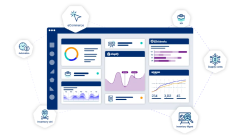The Cin7 Blog
Insights for Intelligent Commerce Success
Stay ahead of the competition with expert tips, industry trends, and best practices for smarter inventory management. Explore stories, strategies, and insights to help you optimize operations, boost efficiency, and scale your business with confidence.
Want these fresh insights delivered to your inbox? Subscribe to the Cin7 blog now!

Business Tips
• March 18, 2025
Tariffs, Recessions & Supply Chains: Strategies for 2025
Let’s face it–economic uncertainty is part of running a business. But today’s supply chains face .

Inventory
• July 3, 2025
Beauty in Balance: How Smarter Inventory Management Powers Profitable Growth
Growing a business is an exciting time, but it can also feel overwhelming. With orders pouring in.

Business Tips
• July 1, 2025
10 Things to Look For in Inventory Forecasting Software
Inventory forecasting software is a specialized digital solution that helps businesses predict.

Business Tips
• June 26, 2025
How to Create a Simple Inventory Management System
If you manage or work for a business that deals with physical products, mastering inventory.
Subscribe now
Stay in the know
Subscribe for expert tips, success stories, and industry insights delivered to your directly to your inbox.

Retail & E-commerce
• June 24, 2025
Best Practices for Managing Sales Channels and How Cin7 Can Help
As a product business, you’re likely trying to attract customers, retain those customers, and turn.

Retail & E-commerce
• June 20, 2025
Making The Season Bright with Cin7’s 2025 Holiday Product Sellers Checklist
It’s the most wonderful time of the year. The holidays are fast approaching, and while your.

Business Tips
• June 17, 2025
How to Improve the Customer Experience
You know that combining quality products with exceptional service is a recipe for success. It.

Manufacturing
• June 12, 2025
MES Capabilities Checklist for Small to Mid-Sized Manufacturers
As small and mid-sized manufacturers work to stay competitive in an increasingly demanding market,.

Manufacturing
• June 10, 2025
Building a Smarter End-to-End Manufacturing Ecosystem with Connected Software
The efficiency and agility of a manufacturing operation are significantly enhanced when key.

Business Tips
• June 5, 2025
Production Planning and Scheduling Software: What to Look for in 2025
Production planning and scheduling are essential to keeping a manufacturing operation running.

Business Tips
• June 3, 2025
Discrete vs Process: Which Type of Manufacturing Software Fits Your Business?
Manufacturing operations typically fall into one of two categories: discrete or process. This.

Finance
• May 29, 2025
From Taxed to Tactical: A Resource List for Smarter Selling
We know tariffs are top of mind for SMBs right now, whether you're navigating cost increases,.

